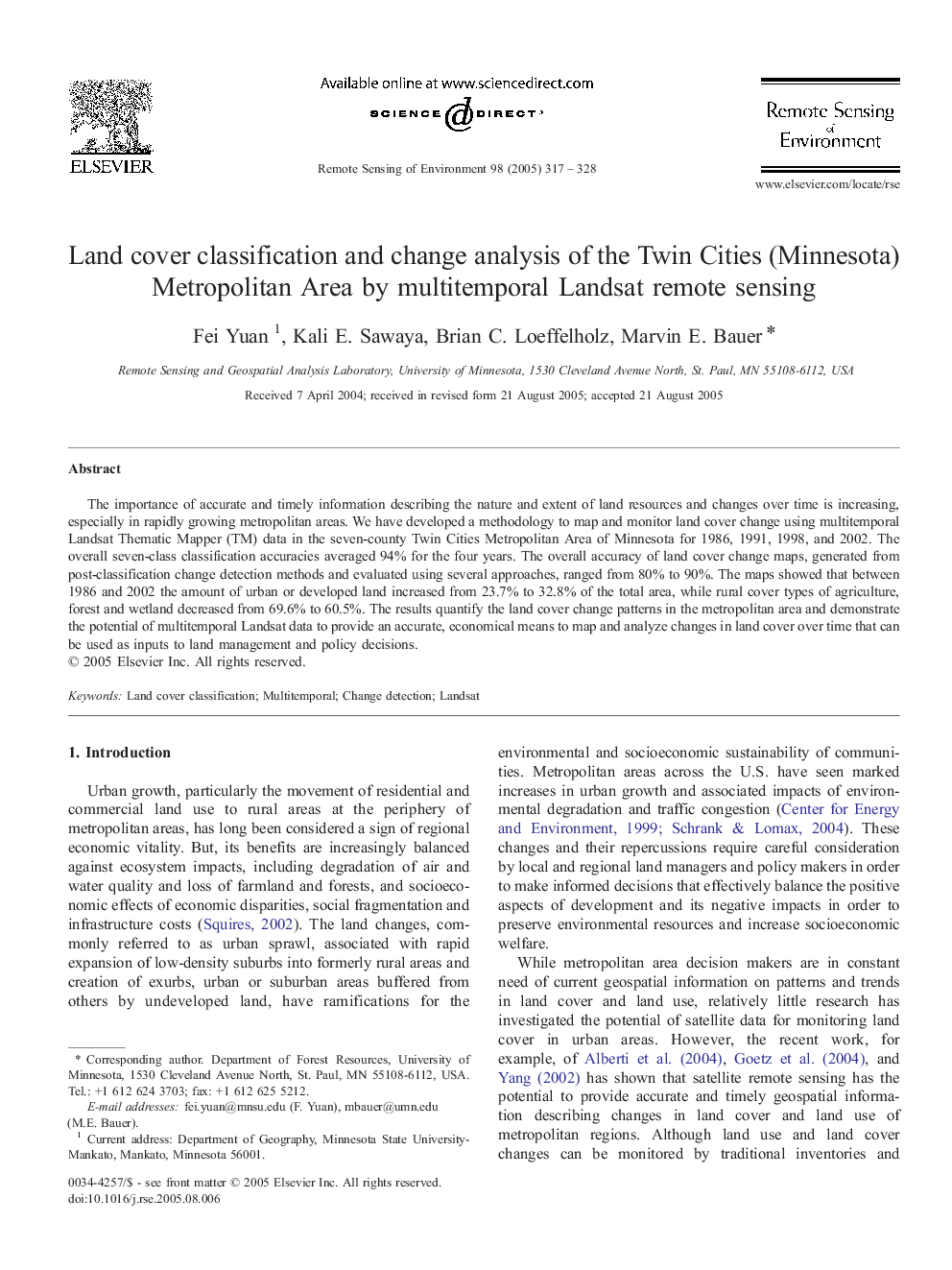| Article ID | Journal | Published Year | Pages | File Type |
|---|---|---|---|---|
| 10114089 | Remote Sensing of Environment | 2005 | 12 Pages |
Abstract
The importance of accurate and timely information describing the nature and extent of land resources and changes over time is increasing, especially in rapidly growing metropolitan areas. We have developed a methodology to map and monitor land cover change using multitemporal Landsat Thematic Mapper (TM) data in the seven-county Twin Cities Metropolitan Area of Minnesota for 1986, 1991, 1998, and 2002. The overall seven-class classification accuracies averaged 94% for the four years. The overall accuracy of land cover change maps, generated from post-classification change detection methods and evaluated using several approaches, ranged from 80% to 90%. The maps showed that between 1986 and 2002 the amount of urban or developed land increased from 23.7% to 32.8% of the total area, while rural cover types of agriculture, forest and wetland decreased from 69.6% to 60.5%. The results quantify the land cover change patterns in the metropolitan area and demonstrate the potential of multitemporal Landsat data to provide an accurate, economical means to map and analyze changes in land cover over time that can be used as inputs to land management and policy decisions.
Related Topics
Physical Sciences and Engineering
Earth and Planetary Sciences
Computers in Earth Sciences
Authors
Fei Yuan, Kali E. Sawaya, Brian C. Loeffelholz, Marvin E. Bauer,
